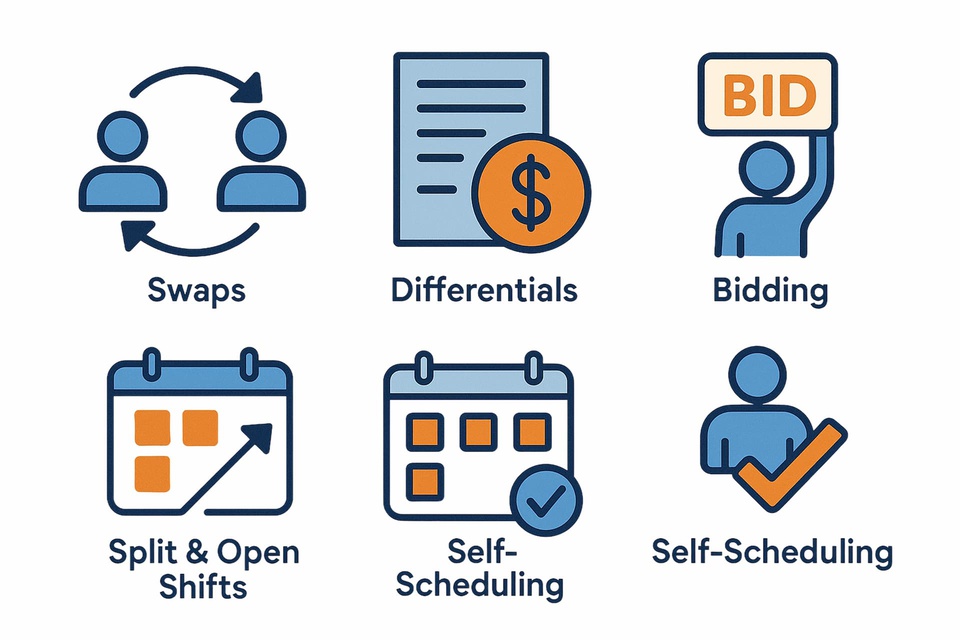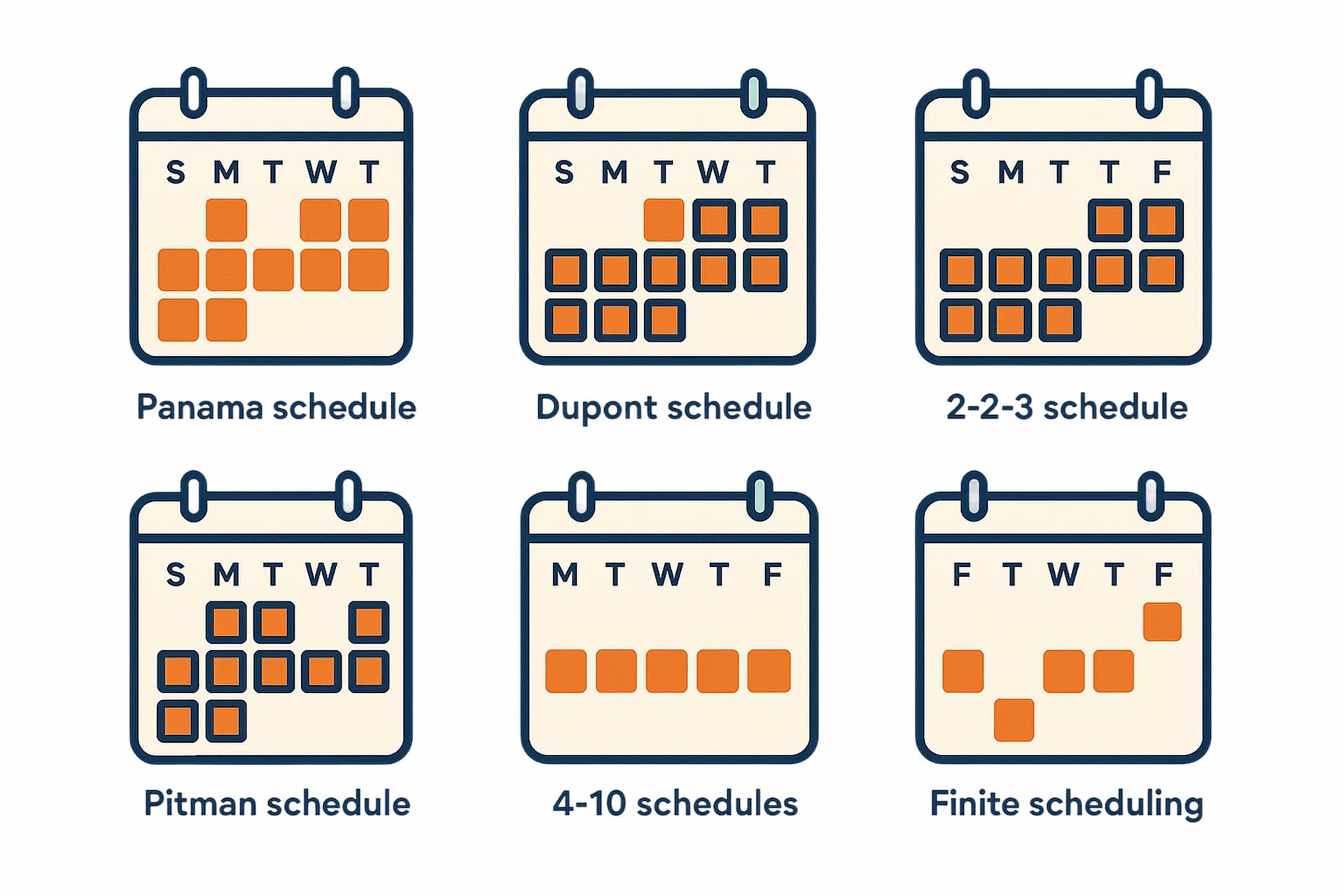What’s inside
Why shift practices matter now
Schedules are no longer just about filling boxes-they determine service levels, labor costs, and employee morale. Modern practices like shift swaps, bidding, and self-scheduling help organizations cover demand more precisely while giving employees fairness and control. The result? More reliable operations and less last-minute chaos.
Shift swaps: from chaos to policy
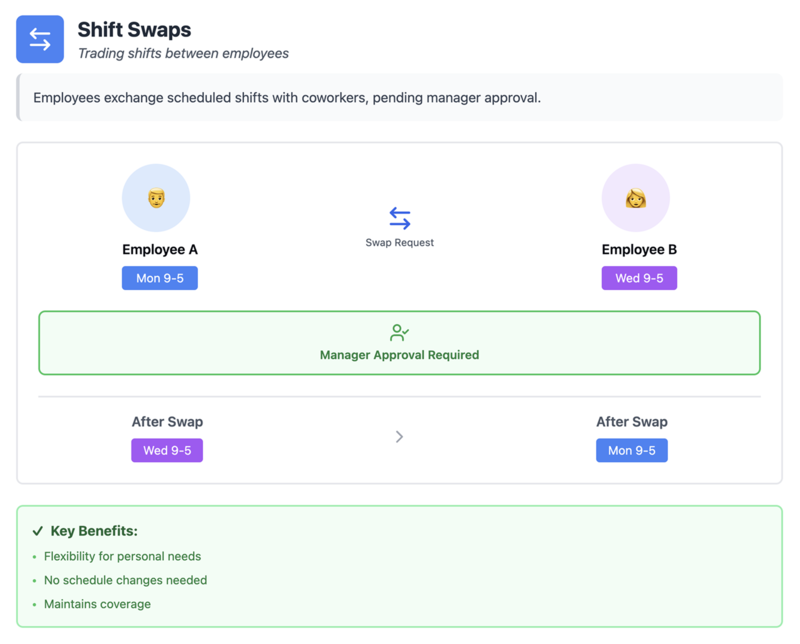
Informal swaps via text or chat often lead to missed shifts, payroll errors, and frustrated managers. The solution is not banning swaps, but formalizing them with rules: who can swap, how far in advance, and with what approvals. Adding checks for skills and overtime limits keeps operations safe and fair.
Example: In retail, two cashiers might swap a Saturday and Sunday shift in WhatsApp. Without oversight, the store could be short-staffed. With proper policies and a scheduling platform, swaps are tracked and payroll stays accurate.
Industries using shift swaps:
For deeper insights and templates, see Solve Shift Swap Chaos.
Shift differentials: paying fairly for hard hours
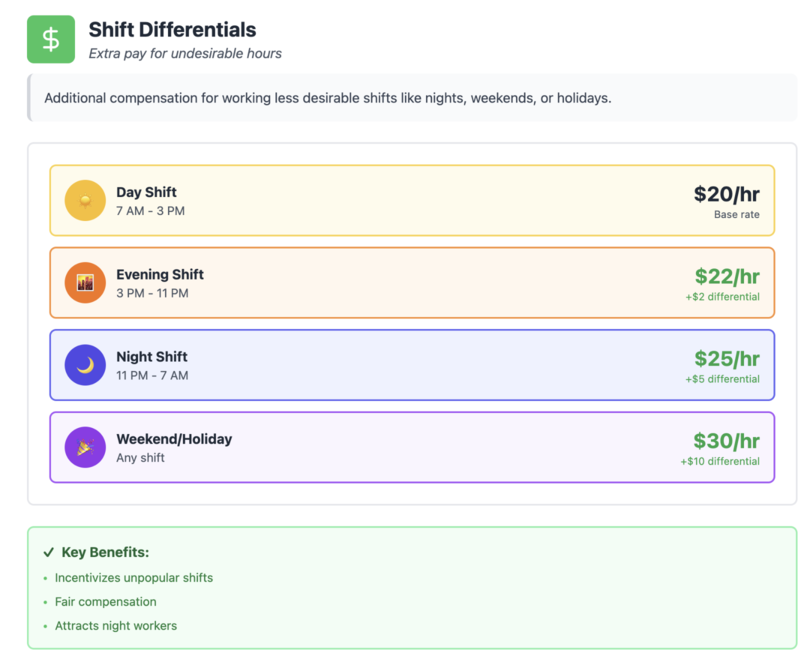
Nights, weekends, and holidays are unpopular but critical to cover. Differentials-extra pay for hard hours-motivate staff to volunteer for those shifts and ensure fairness without raising base wages across the board.
Example: A nurse might earn +20% on overnight duty, or a driver might get a premium for 3 a.m. deliveries. These incentives balance workloads and retention.
Industries where differentials are standard:
- Hospitals and emergency services
- Transport and logistics
- Call centers and BPOs
- Security
Learn more in our Shift Differentials guide.
Shift bidding: transparency and choice
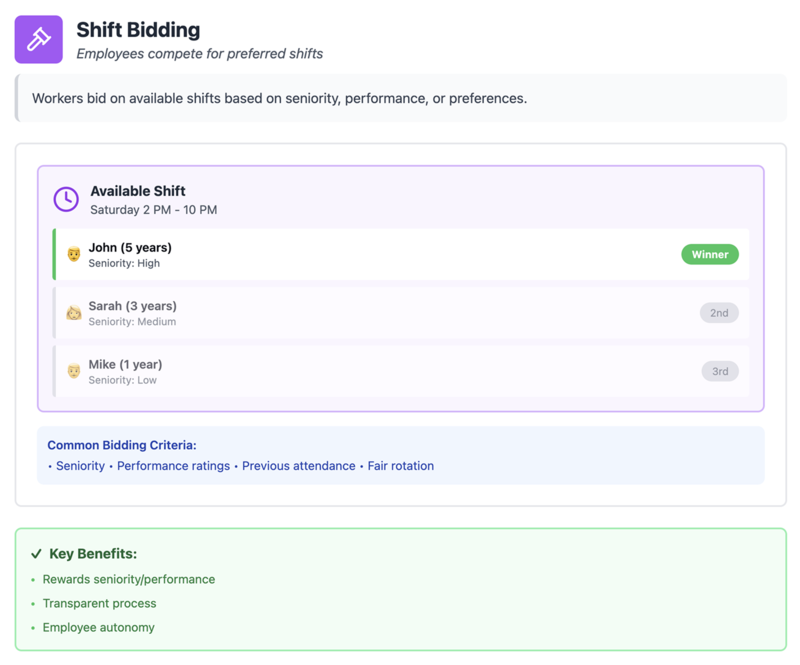
Shift bidding lets employees request or “bid” for shifts, while managers retain guardrails. Done right, it boosts engagement and reduces no-shows. Done wrong, it can feel unfair if senior staff dominate all the best shifts.
Example: A logistics center posts a month’s schedule. Workers bid on shifts; allocation is decided by a mix of seniority, skills, and fairness rules.
Industries adopting bidding:
- Call centers and telecoms
- Warehousing and logistics
- Seasonal sectors like hospitality
Explore sample rules in our Shift Bidding article.
Split shifts: precision coverage without overtime
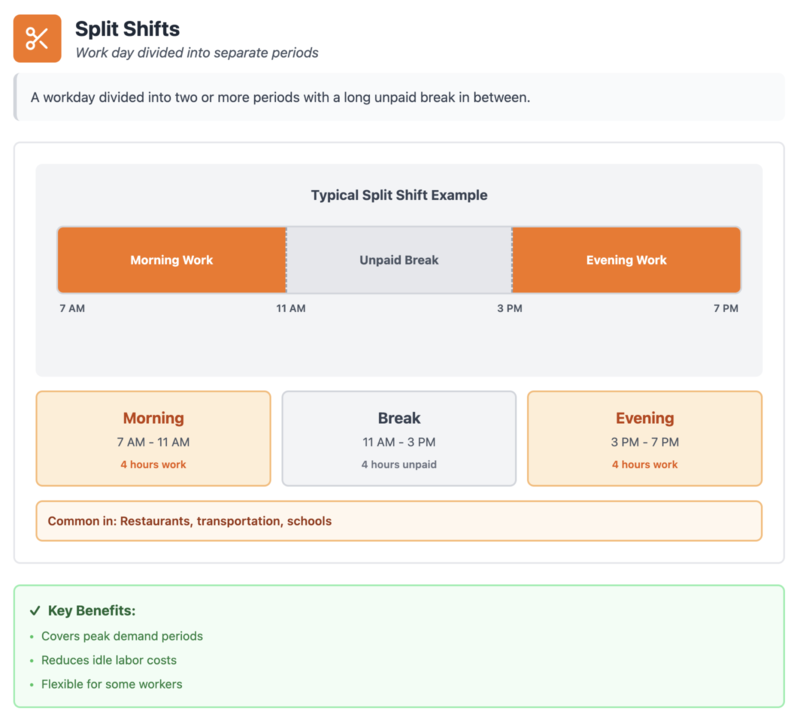
Split shifts divide a day into two working blocks, perfect for businesses with demand peaks but long quiet periods. They provide coverage efficiency but can be inconvenient for employees, so opt-in models and compensation are key.
Example: A server works lunch 11 a.m.–2 p.m., then dinner 6 p.m.–10 p.m. A school bus driver runs morning and afternoon shifts. Employers may add stipends or meal vouchers to make the gaps less painful.
Industries using split shifts:
- Restaurants and hospitality
- Schools and transport
- Outpatient clinics
Did you know? California law requires an additional “split shift premium” to protect workers.
More patterns and pros/cons in our Split Shifts article.
Open shifts: filling gaps fast
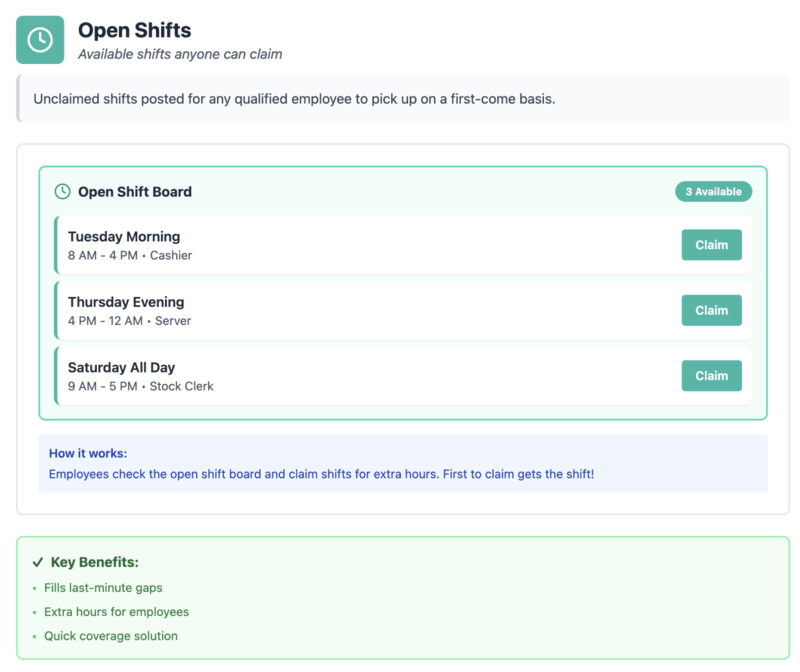
Unexpected absences and demand surges are inevitable. Open shifts let managers post available slots and employees claim them-reducing last-minute calls and stress.
Example: A warehouse manager posts two open shifts for a sudden delivery surge. Notifications go out to qualified workers; those who accept are auto-approved if they meet eligibility limits.
Industries relying on open shifts:
- Retail chains
- Logistics and warehousing
- Healthcare departments
Read more about Open Shifts.
Self-scheduling & self-service
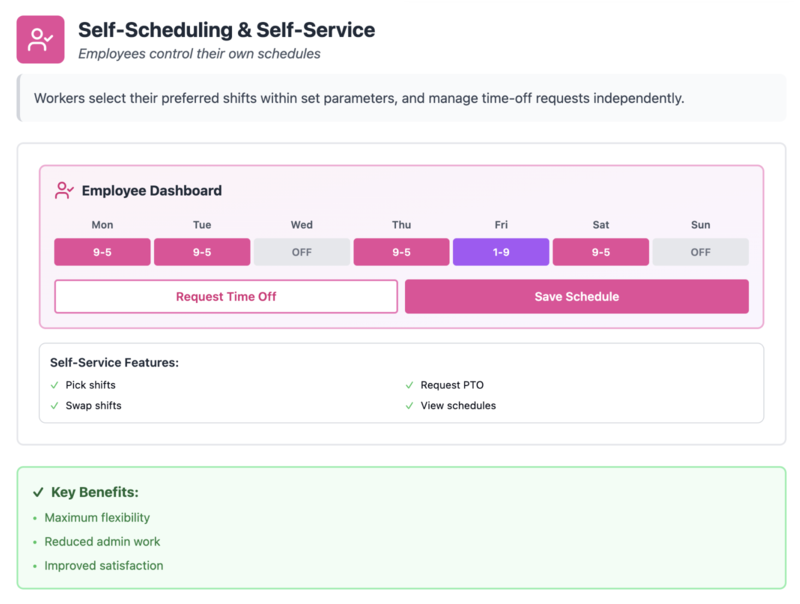
Self-scheduling flips the model: managers define staffing needs, but employees propose who covers which shifts. It improves work-life balance and retention, but only works with clear rules and oversight.
Example: Nurses in an ICU draft their preferred schedule collaboratively. A manager approves, ensuring coverage and compliance. The result is more engaged staff and fewer last-minute changes.
Industries where self-scheduling thrives:
- Healthcare (especially nursing)
- Education and research
- Creative and knowledge work
Learn about Self-Scheduling and how to scale with digital portals .
Implementation playbook
Adopt new practices step by step. Start with swaps or open shifts-the biggest pain points. Add differentials to align incentives, then pilot bidding or self-scheduling in one department before scaling. Track key metrics: fill rates, late changes, overtime, and employee satisfaction. Iterate continuously.
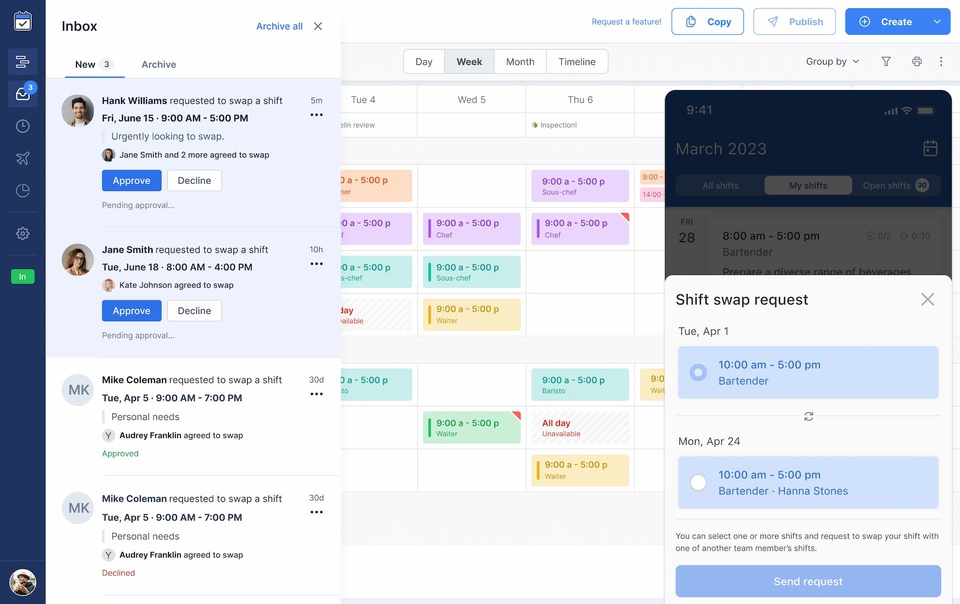
Want to simplify schedule planning? Try Shifts by Everhour and see how easy it is to build smarter rosters.
